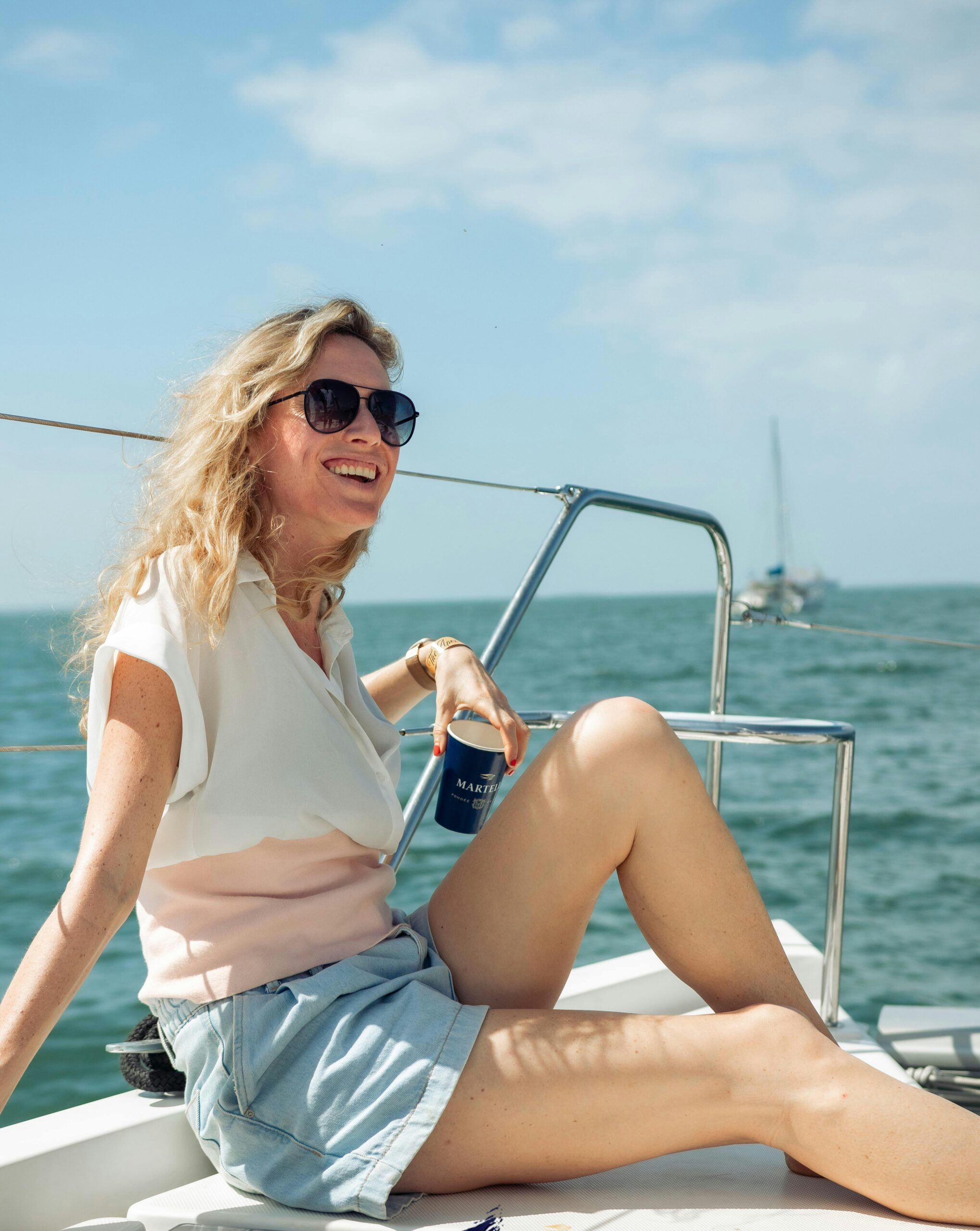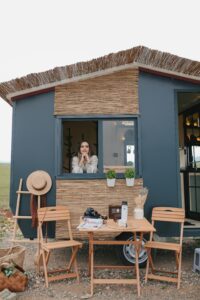Boat life is for a very small subset of people. It is like living in something the size of a van buildout or perhaps a small camper, but with a lot more maintenance and a constant rocking motion that can become a big bouncing motion when there’s bad weather. People with motion sickness need not apply. But for those people who were born to be on the water, it can be a cheaper option than living on land and only boating on the weekends.
This is a floating house. It is not a boat because it has no source of locomotion, and it stays anchored in the same place. Unlike other boats that you will see, this house is not tethered to a marina; it’s out on a lake, near the shore line and a boat is required to travel from it to the land. It’s quite a large space, both inside and out, for a floating house. The owner is very eco-conscious and has made almost all of the house and its decks from salvaged material. He recycles trash he gets from the water for what little bit of cash he needs to live and he grows most of his own food. You may think that he grows a garden on the shore, but no, he grows in planters, made from recycled barrels, right on his deck. Even more amazingly, he has managed to have chickens on board. They even have their own “yard” with fresh greens to eat. So, all in all, a very cheap way to live on the water.
This couple (and dog!) live in a floating tiny house. As with the previous example, the owners have to use a boat to get from their house to a nearby marina (which the husband manages), where they can then get in a car to go elsewhere (such as to the wife’s job). Because of how it’s built, it is more stable than other boats, and with it being on a lake, it will not be affected as badly by the weather as a boat on the ocean, so it’s a better option if you like staying on a boat, but have an upper limit for how much motion you can handle. The house portion is so small, most of their living has to take place outdoors. They have a small woodburning stove for heat, but do not appear to have any form of air conditioning. Which, being from nearby Tennessee, I can tell you that’s rough in the summer months with the heat and humidity. Getting in the water seems to be their answer to cooling off (although I imagine that their bunk bed gets pretty hot at night, as they don’t have good air flow around it). It wasn’t mentioned, but it would be possible to make up a bed on the deck outside and sleep that way if it was too hot inside. I think an old fashioned, screened-in sleeping porch would be a requirement for me.
This is another handmade raft, but it features a tent, not a house. They have a little segment of the video where you can see how they constructed the pontoon base. If I understood them correctly, they live on the raft in the summertime, but go elsewhere in the winter. (This also seems to be when they work to save up enough money to spend the summers traveling Sweden’s waterways.)
Having spent some time in a tent myself, I will say that a round tent is typically the least-efficient in terms of space. We had a 12’x12’, and later a 14’x14’ square (marquee) tent and that provides a lot more space. It also gives you interior poles that you can use for shelving, a clothes rack, clothes hangers, lantern hangers, etc. The benefit to a round, which has fewer poles (some only have the one center pole), is that it would be lighter weight.
This is a tiny house (more of a cabin, really) built on top of a regular pontoon boat. Although it’s now on its second owner and there isn’t a detailed account of how it was built, it can still give you some inspiration if you would like to do something similar with an old pontoon boat.
This Navy veteran lives on a small sailboat. It has enough room for one person to live relatively comfortably, being bigger inside and having more headspace than a van buildout. It could stand a bit of a cosmetic remodel; some fresh paint and new cushions could make it look brighter and more homey, instead of the old bachelor pad that it is. But what’s important is that it suits its owner. He is able to dock in San Francisco and live for about $400 a month. (I think rent on an apartment the size of his boat would probably be closer to $3,000.) He works remotely from the boat using the marina’s wi-fi (although digital nomads are increasingly adopting Starlink so they can work away from cities and conveniences like wi-fi). Similar to campgrounds, he is limited in the amount of time he can stay on the boat in the marina before he has to take the boat out, or he has to go stay somewhere else. While he sometimes takes the boat out for a weekend, more often he just goes out in his truck to camp for a weekend.
This is not a construction project for the weekend DIYer, but this couple—she a carpenter and he an actual boat-builder—renovated this unique, two-story boat and turned it into a beautiful tiny home on the water. If you have a boat that’s in good shape, this can give you some ideas about designing the interior for living. Do note that he mentions regulations in different places regarding living in a boat versus living in a floating house. This will be something you will have to check on for the location where you want to live (and you may need to plan on living somewhere else).
This is another floating house. It was entirely hand-built, but not from scrap or repurposed materials; the owner did a very professional job making a wood-and-fiberglass barge (the previous two boats were pontoons) and then building a 700 sf, 2-story tiny house on top of it. It’s a very beautiful build and completely off-grid. He discusses some important safety features, so if you’re interested in building or completely remodeling a boat or floating house, there’s information in this video that you should consider. He also has an ingenious system for recycling his gray water so that nothing goes into the river.
And to end with, the pinnacle of the boat builders and boat livers. This couple—in middle age, no less—studied how to build a steel boat and they built it in their front yard over the course of 4.5 years. And then they got it into the water (somehow) and have sailed around the world for 30 years. They are now in their 80’s and still in the water.
This truly boggles the mind. Sailing is a lot of hard physical labor. And when you see the inside of their boat, you will see that there are places where they have to crawl through to access storage and a spare room and to maintain the motor. There are people in their 20’s who are not fit enough to operate this boat and live in it, and they’re doing it in their 80’s.
If anything should inspire you to step out of your comfort zone and do something you think you might not be able to, this is it.
Is a boat or floating house not the right option for your area or stomach, but you want tiny living and a nomad life? There are plenty of other alternatives available: On the Road Again – Exploring Nomadic Housing Options


